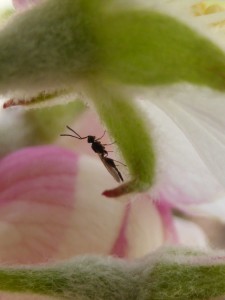We recently got into the Fortitude series screened on the ABC in Australia. (Spoiler alert, if you continue reading). The show started off really well, successfully holding our attention after the incomparable Broadchurch (no mean feat!). Fortitude also had the promise of being truly brilliant. Halfway through, Nordic Noir descended into the standard gratuitous gore that sends a show from well-crafted, thrilling narrative into sensational schlock. Plus some character dead-ends and ambiguous plot-lines loosened the knots holding up a tight story. But it is still definitely worth hanging out for the next series (i.e. not downloading early off iTunes or whatever you cheat with).
From the first episode, I had a theory that the series was based on a pro-environment message. A tiny community (about 800 people) in Arctic Norway, an unconventional setting for standard TV dramas, is plagued by secrets, lies and grisly murders. The community is a mining town, as well as an arctic research station, and the governor is planning to build an ice hotel to boost tourism. Oh, the juxtaposition of ethical quandaries!
The discovery of ‘something’ in the ice where the hotel development is to be built, and the controversies and murders that arise from this discovery, confirmed my theory on a ‘look what happens when we mess with nature’ message. Then the gore got in the way, leading us astray with hints of demonic possession, and we stopped watching.
But wait! Wasps! Yes, wasps saved the day, sliding the theme back into ecological territory. The discovered ‘something’ was a mammoth carcass that was found in thawed permafrost near the proposed hotel development site. The carcass seeded the blackmail and murder that the series is founded on…and it turned out to have some hitchhikers.
Parasitic wasps (identified in the show as from the Ichneumonidae family) had laid their eggs in the carcass. When the permafrost thawed, the larvae defrosted, pupated and came out to play.
Ichneumonids are parasitic wasps. There are at least 60,000 species in the world, more if you count the closely-related Braconidae too. As larvae, many of these species are natural enemies of economically-important insect pests. As adults, they also feed on nectar and pollen, pollinating flowers in the process. Pollinators + biological control = awesome insects.
Unfortunately, Fortitude’s resurrected ichneumonids parasitised humans, in the same way they would have infected mammoths 4500+ before now. In true noir-style, the wasps wrought havoc through madness, inappropriate use of kitchen utensils, and lots of blood. Scary, no?
It would be…if it were true. Sadly, there is no evidence that Ichneumonidae wasps (or any other insects, for that matter) can survive permafrost. The plot development was no doubt inspired by recent research that successfully grew a herbaceous plant from a seed found in permafrost, and also brought a virus back to life (that isn’t known to affect humans) from Siberian permafrost.
But insects are cold-blooded. Many of them can’t even handle winter in temperate regions, let alone survive permafrost for thousands of years. So why make it a wasp, and not a virus or a Triffidesque plant? Most reviews of Fortitude include some reference to Darwin’s observation that Ichnuemonidae were some kind of anti-Christ. So what is the main reason that Fortitude’s creators chose a waspy culprit, despite its ecological inaccuracies? Is this an environmental awareness story? Or is it a misguided attempt to give credence to Darwin’s views? Maybe we have to wait until the next series to find out.
Either way, never fear. There will be no gangs of prehistoric wasps zoning in on your innards. But, however sensationalised, the show does remind us of the truly serious impacts climate change will have, few of which are included in development plans or political campaigns. We have no idea what the melting permafrost will unleash. Do we really want to wait to find out?
© Manu Saunders 2015


One thought on “Killer wasps and climate change”
Comments are closed.